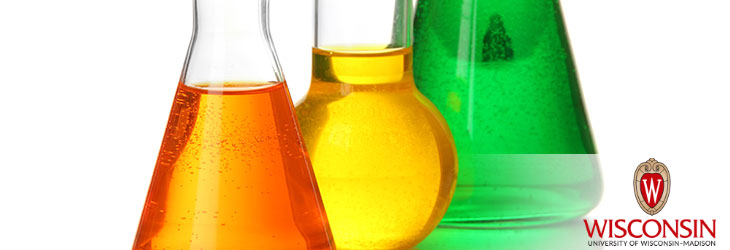Materials & Chemicals

Improved Manufacture of Porous Materials for Catalysis and More
WARF: P160073US01
Inventors: John Perepezko
The Wisconsin Alumni Research Foundation (WARF) is seeking commercial partners interested in developing a cheaper, simpler and more scalable method for synthesizing oxides with controlled porosity.
Overview
Porous materials are used in a wide variety of scientific and industrial applications including catalysis, energy storage and emerging biomedical technologies. Types include porous zeolites (commonly used in petroleum refining), metal-organic frameworks (MOFs) and covalent-organic frameworks (COFs).
No single class of porous material is ideal for all purposes, and multiple time-consuming processing steps are usually required to produce the final structure. To be commercially viable the materials must be scalable and cost effective, and satisfy multiple functional criteria such as long-term stability, selectivity and adsorption kinetics. This presents a serious design challenge and requires great control over structure.
No single class of porous material is ideal for all purposes, and multiple time-consuming processing steps are usually required to produce the final structure. To be commercially viable the materials must be scalable and cost effective, and satisfy multiple functional criteria such as long-term stability, selectivity and adsorption kinetics. This presents a serious design challenge and requires great control over structure.
The Invention
A UW–Madison researcher has developed a new method for manufacturing porous metal-oxygen based materials. The method achieves structures with controlled porosity and shape based on air oxidation.
In brief, the materials are produced from metal alloys via an oxidative dealloying process that selectively removes one or more elements from the alloy and converts remaining elements into a stable metal-oxygen matrix having a controlled porosity. Once fabricated, the porous matrices are post-treated to render them suitable for various downstream applications.
In brief, the materials are produced from metal alloys via an oxidative dealloying process that selectively removes one or more elements from the alloy and converts remaining elements into a stable metal-oxygen matrix having a controlled porosity. Once fabricated, the porous matrices are post-treated to render them suitable for various downstream applications.
Applications
- Manufacturing porous materials for use in catalysis, energy conversion and storage (e.g., batteries, supercapacitors), membrane filtration, biomedical technologies and more
Key Benefits
- Streamlined and cost effective
- More scalable than existing processes
Stage of Development
The method has been demonstrated to yield nanoporous SiO2 and ZrO2, and porous HfO2 and TiO2. It can be employed with any material that oxidizes a volatile species alloyed with a non-volatile oxide-forming element.
Additional Information
For More Information About the Inventors
Tech Fields
For current licensing status, please contact Emily Bauer at [javascript protected email address] or 608-960-9842